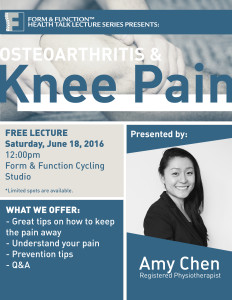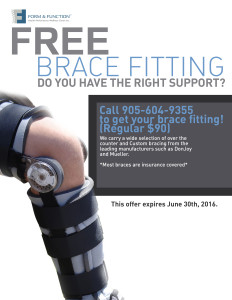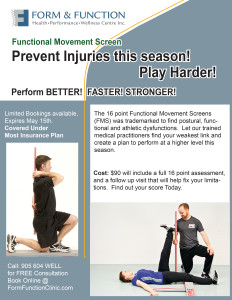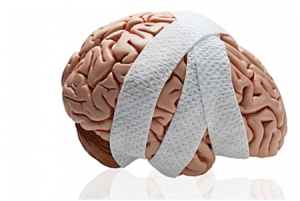Keep your socks clean!
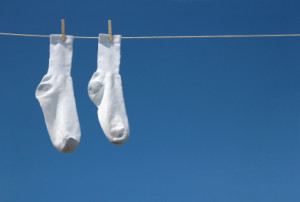
Make sure to keep your socks clean. If your socks get soaked as a result of the sweat from your feet or from the rain/snow etc. be sure to remove your socks as soon as possible. It is very easy for bacteria to invade your feet after they have been in shoes for a while. Bacteria love warm and moist environments. So keeping your feet dry will help to minimize your risk of Athlete’s Foot!
Jennifer Lam, Chiropodist
Food Tracking Made Easy
Keeping track of your food intake can help you meet your health goals, whether they be losing weight or increasing muscle mass. While there is nothing wrong with the tried and true pen and paper food journal, there are many apps available for free that can make the process easier. The easier the process is, the more likely you are to stick with it.
The app that I currently use and recommend to my patients is MyFitnessPal which is available for free download at https://www.myfitnesspal.com/
It’s great because it helps you easily track the foods you eat, and also calculates how much protein, carbohydrate and fat you are eating daily. It also allows you to set your goals at the start of using it, and you can easily see how you are meeting (or not meeting) your food requirements on a daily basis, so that you can make the proper adjustment. Also, by sharing this information with your naturopathic doctor, they can help you determine how your eating habits can be improved to help you achieve your health goals.
Wishing you good health,
Dr. Odette Bulaong ND
Work Ergonomics
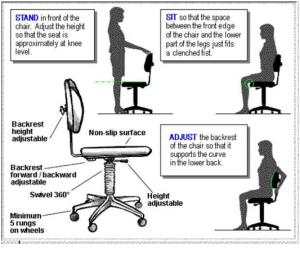
Having a proper workstation is vital to reduce work related health issues such as bad posture, headaches and unnecessary muscle strains. Contrary to popular belief sitting, which most people believe is relaxing, is hard on the back. Sitting for long periods of time can cause increased pressure on the intervertebral discs, the springy shock absorbers of the spine.
The following are recommendations to help increase comfort for computer users:
- Alternate between sitting and standing. Take a break every half hour.
- Adjust height of backrest to support the natural inward curvature of the lower back. You can use a rolled towel to support the low back.
- Make sure the backrest angle creates a 90-degree angle between the hip and torso.
- Feet should rest flat on floor when sitting with both the low back and shoulders touching the backrest.
- Back of the knees should not come in direct contact with edge of the seat pan, there should be some space left in between.
- Arms should rest lightly on the arm rests and do not use the arm rests to slouch!
If you need help or advice regarding running tips and tricks, come by Form and Function Clinic. Our physiotherapist and chiropractors would love to show you how.
Tips for Beginner Runners
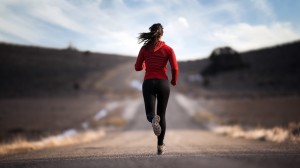
So many people start towards their fitness goals by running. There’s nothing wrong with that if they go about it the right way. Here are some quick tips:
- Pace yourself. Start running at a pace where you can carry a conversion without huffing and puffing initially. Over time, that pace will increase
- Run the right distance. Start with 2-3 km and see how sore you are the next day. If the soreness is gone within one day, you can increase the distance. If not, stay at that distance.
- Rest correctly. Always have at least one day in between runs for rest and recovery. I recommend only running 2 times a week for a month before increasing your frequency
- Get fit. You should be fit enough to run if you want to run to get fit. Some basic muscle strength/endurance is important to run properly. Come in to Form and Function to get assessed on what exercise you need to do before you run.
If you have any more questions, feel free to contact us at Form and Function Clinic or book an appointment to see one of our therapist.
Manni Wong, Physiotherapist
Health Talk: Have you ever had a Concussion?
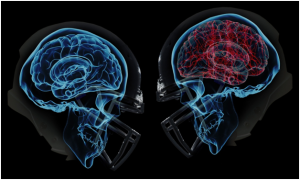
A concussion is an injury to the brain that changes the way your brain functions. The effects are usually temporary and include headaches, trouble concentration, memory loss (amnesia), balance and coordination.
Concussions are usually caused by an impact to the head but can also occur when the head and upper body are violently jarred. Most concussions do not result in loss of consciousness. This allows concussions to plague more recreational athletes because they don’t realize they have one.
Concussions are common, especially if you play a contact sport such as hockey. Each time you get a concussion, it’s your brain that has to heal. Most concussions are mild and people can recover fully.
The most common symptoms after a concussion are headache, memory loss and confusion. Other symptoms can include:
– loss of consciousness
– feeling of pressure in the head
– a fog like state of mind – confusion
– appearing dazed
– forgetting what happened
– dizziness
– double-vision
– sensitivity to light
– seeing stars
– nausea
– vomiting
– slurred speech
– slower response to questions
– fatigue
These symptoms can manifest immediately or over the next few hours up until days after an injury. In children – this can be a change in personality – lack of interest in favourite toys/foods, increased irritability and crankiness, loss of balance and unsteady walking, and excessive crying.
The Cause
After hitting your head – the force of the impact causes your brain to hit against the inside of the skull. This movement causes brain cells to stretch and or tear changing their electrical and chemical balance. This change is critical to their function and communication which in turn gives us the many symptoms of a concussion. After an injury the brain is left in a highly stressful state where it begins to heal itself.
A concussion is essentially an energy crisis within the brain. After an injury – the brain will try to heal itself – which by nature demands a lot of energy. This is why the single most important thing you can do if you think you are suffering a concussion is to GET REST. Rest is both mental AND physical rest in conjunction to addressing any associated neck injuries you may have suffered.
After a single concussion – there is a window of brain vulnerability – this is when the brain is in its healing state and demands the most energy. This is usually from day 3-7 after an injury. If you suffer a second head impact during this time your concussion will get worse. This can prolong proper complete recovery up to 6 months to 2 years.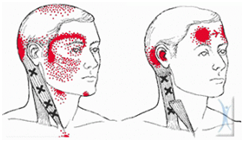
Associated Neck injury
Anytime there is enough force for you to have a concussion – there can be an associated whiplash through the neck. The amount of force to allow your brain to slosh into the inside of your head is enough to irritate or cause some issues into the neck. Sometimes some of the symptoms you think are a concussion can actually be coming from your neck!
How can I help?
I can assess you to see a baseline in your balance and function as well as address any musculoskeletal issues (muscle, ligament, joint, nerve) in the neck after an injury. After an assessment I can explain to you what is going on and the plan to achieve a full recovery – including exercise to make your neck stronger!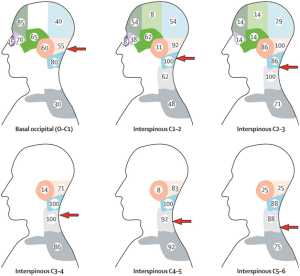
Dr. Jon Leung, DC
Sit Differently After Meals
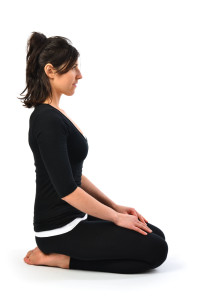
It does not matter how much one eats but how much one can digest. The digestive
system is the fulcrum of all human systems. To strengthen it is to strengthen the entire
human organism. Normally, people start working immediately after taking meals. For
proper digestion, blood should flow properly towards the digestive system. For this one
needs to learn the Thunderbolt pose.
Benefits:
The Thunderbolt pose improves digestive efficiency by reducing the blood flow towards
the lower pelvic region and increasing it towards the stomach. The chances of acidity
and flatulence decrease. Besides, it strengthens muscles of the back and the neck.
Technique:
Keep the lower legs together and sit on heels, so that the thighs rest on calf
muscle and the buttock rests on heels. Back and neck should be kept straight.
Maintain the posture for at least 5-10 minutes.
In case of discomfort in legs or feet, undo the posture and stretch your legs.
Warning: Not to be performed by those who have knee problems or who have
undergone knee surgery.
Smriti Kaushal, physiotherapist
Been sitting all day? Legs up!
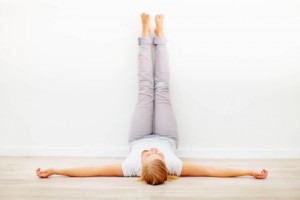
Do you spend a lot of time at work sitting or stuck in one position? During lunch or a break, take the time to move and stretch and change your position to keep your spine healthy. Prop your legs up against the wall with your back on the floor. Take a few deep breaths while ‘sitting on the wall’ to help the back, improve circulation, rest weary legs, or relax in general.
Dr. Jon Leung

